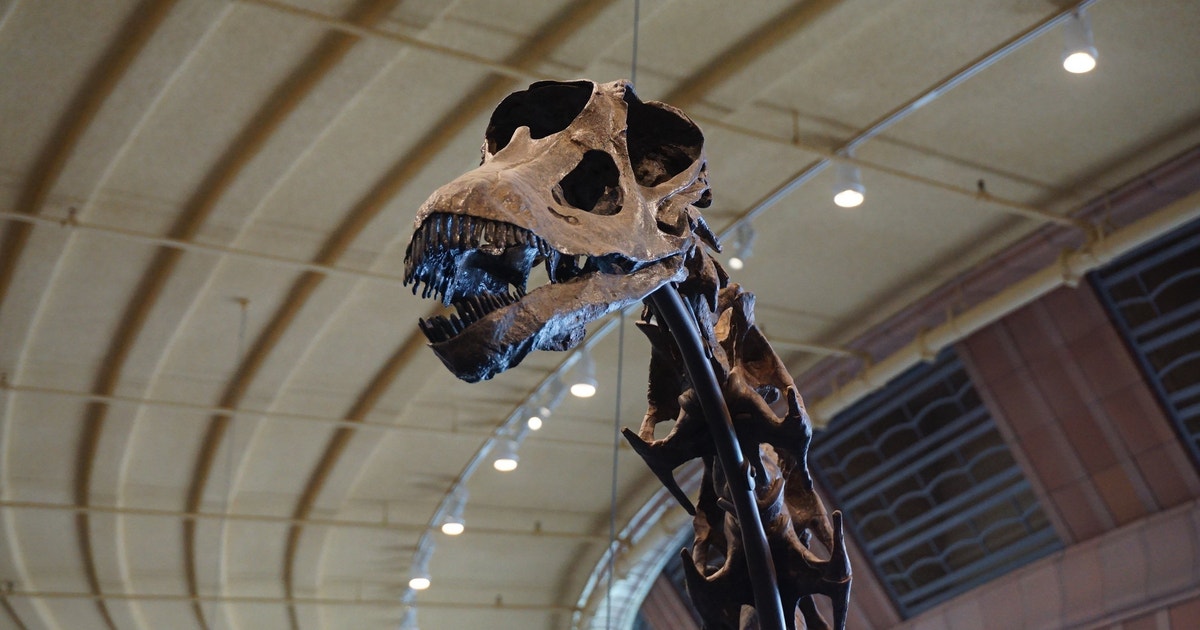What do you think are the closest living relatives to dinosaurs? Maybe alligators? Sharks? Sea turtles? While all of those are close relatives of dinos, none are as close as birds.
Modern birds evolved from a group, or clade, of two-legged dinosaurs known as theropods. This clade is characterized by hollow bones and three toes with claws on each limb. The best-known theropod is probably Tyrannosaurus Rex, but it was a much smaller dinosaur that led scientists to link theropods and birds.
In the 1960s, a fossilized dinosaur known as the Deinonychus was discovered. This small, predatory dinosaur had many similarities to birds: the presence of feathers, the overall structure of its anatomy, and its speed. But one of the most striking finds supporting the evolution of birds from dinosaurs actually came 100 years earlier, with the discovery of Archaeopteryx in 1861. At the time of its discovery, the bird-like fossil confused archaeologists, as birds were not thought to have existed in prehistoric times. Archaeopteryx existed in the Late Jurassic period and is often referred to as the earliest bird, showing key transitional traits between non-avian dinosaurs and true birds. Our knowledge about the evolution of the theropods into modern birds will continue to improve with time.
At Audubon, we study birds’ nesting habits, habitats, diet, and more to understand how we can best protect them for generations to come. Take a look at some of our focal bird species and what traits they share with dinosaurs.
Shorebirds
Shorebirds such as the Snowy Plover, Wilson’s Plover, and American Oystercatcher lay their eggs in small depressions in the sand called scrapes. These shorebirds are also known to nest individually or in small numbers along beaches. The presence of vegetation is important for chicks to stay cool and safe from predators.
A dinosaur nesting ground in Bastus, Spain was found to contain around 300,000 eggs of an unknown dinosaur species that existed in the Late Cretaceous period. The eggs were laid in what was once a near-shore environment but is now the Southern Pyrenees Mountains. The dinosaurs were described to have laid their eggs in the “exposed sandy sediment.” Portions of the eggs had been deposited in a hole dug in the sand, not unlike the nest structure of the shorebirds. Each nest contained 1-7 eggs, with the best-preserved specimens existing in the holes dug in the sediment. Like colonial seabird species such as the Black Skimmer and Least Tern, the nests were closely spaced but did not overlap each other.
Wading Birds
Wading birds such as the Reddish Egret and the American Flamingo nest differently than shorebirds. These two species practice mound nesting. This is the act of creating their nest on plant or mud mounds above waterlogged soil or on floating vegetation. These birds have been found nesting in environments such as tidal flats, mangrove swamps, marshes, and lagoons.
Like these periaquatic nesters, some members of the clade of dinosaurs known as sauropods also practiced mound nesting. Sauropods are characterized by “pillar-like” legs, long tails and necks, large bodies, and a comparatively small head. Popular members of the sauropod clade include Argentinosaurus, Brachiosaurus, and Diplodocus. A study analyzing a clutch of eggs laid by an unidentified sauropod species in the Lleida province of Catalonia, Spain provided additional insight into the likelihood of this clade to have nested in periaquatic environments. The fossilized eggs studied were from the Late Cretaceous period. During this time, the Lleida province was a tidal flat environment. The porosity of the eggshells studied, the style of the nest that the clutch was discovered in, and the tidal flat environment were all comparable to the nests of modern alligators, crocodiles, and some birds in periaquatic environments.
Similarities between modern birds and ancient dinosaurs are obvious even through the large time gap between their existences. Though the two groups of dinosaurs are distinctly different, theropods and sauropods both show similarities in nesting habits compared to modern birds. Just like ornithology, archaeology is an ever-changing field, with new discoveries still being made. The more we study these species, the more we will understand about their connection.
Additional Resources
Enviroliteracy Team. (2025). Did dinosaurs evolve into birds? Enviroliteracy. Did dinosaurs evolve into birds? – The Environmental Literacy Council
Fernandez-Baldor, F.T., (2020). New data on sauropod palaeobiodiversity at the Jurassic-Cretaceous transition of Spain(Burgos). Journal of Iberian Geology. https://doi.org/10.1007/s41513-020-00145-w
Lopez-Martinez, N., et al. (2000). Dinosaurs nesting on tidal flats. Paleogeography, Paleoclimatology, Paleoecology. https://doi.org/10.1016/S0031-0182(00)00063-8
Sanz, J.L., et al. (2002). Dinosaur nests at the sea shore. https://docta.ucm.es/bitstreams/6207d324-225d-4f16-981d-e919595c12be/download

